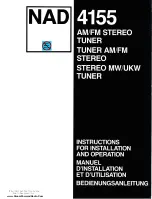
_____________________________________________________ 1 PolaRx4_PRO and PolaRx4TR_PRO
PolaRx4 Product Family Hardware Manual v2.0.0
7
Never inject a DC voltage into the MAIN connector as it may damage the receiver. When using a splitter
to distribute the antenna signal to several receivers, make sure that no more than one output of the splitter
passes DC. Use DC-blocks otherwise.
1.1.2
PPS OUT (BNC)
xPPS output (5V, output impedance 50Ohms). The rate and polarity of the xPPS output signal are
specified by the
setPPSParameters
command (see the Command Line Interface Reference Guide).
The pulse duration is 1.2ms.
1.1.3
REF IN (BNC)
Use this connector to provide the receiver with an external 10-MHz frequency reference, to be used
instead of the internal oscillator. The reference signal must be sinusoidal with a peak-to-peak amplitude
(unloaded) ranging from 0.5V to 2V (-8dBm to +4dBm in a 50
load).
Connecting or disconnecting the external 10-MHz reference is preferably done with the receiver
switched off. If the 10-MHz reference is connected or removed during operation, the receiver will reset.
If you are not using an external frequency reference, it is recommended to connect the supplied 50
terminator to the REF IN connector.
1.1.4
REF OUT (BNC)
This connector provides a 10-MHz output signal synchronized with the frequency reference used by the
receiver. It is a sinusoidal signal with unloaded peak-to-peak amplitude of 1.1V, and output impedance
of 50Ohms.
If a 10-MHz reference is fed to the REF IN connector, REF OUT simply duplicates REF IN, which
allows to chain receivers using the same clock reference.
If REF IN is not used, the 10-MHz signal at the REF OUT connector is taken from the internal receiver
clock. It is a VTCXO disciplined to GNSS time so that REF OUT provides a stable reference frequency.
The Allan standard deviation of the clock at the REF OUT connector when REF IN is not used is shown
below.







































